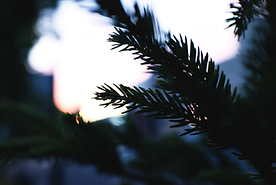top of page
B


Japanese Elm
(Harunire)
ツリバナ
Korean Spindletree (Tsuribana)

In early summer, green, unripe fruit hangs from the slender branches of the Spindletree, which is where it gets its name: “Hanging Flower.” In autumn, when the vivid leaves are at their most brilliant, the vermillion seeds peel back their skin to reveal a pentad of bright red fruit, elegantly decorating the landscape. In the season where the land is covered in pure white snow, this fruit falls and garnishes the fresh snow with tinges of red, reminding us of the last vestiges of the past autumn.
Japanese Elm (Harunire)

The Japanese Elm is a tree that grows slowly, similar to humans. As it matures slowly, it grows into a safe and sturdy tree. It grows tall while communicating thoughts and feelings with people who live close by, lives together with our memories, and protects us from wind, rain and the sun’s harsh rays. The towering Japanese Elm projects a deep kindness and announces the arrival of spring with the blooming of its many faint red flowers.
ハルニレ
Nishikawa Tetsuro – Morimura Seiichi (Ryokudo of Youth) Commemorative Monument to Literature

Nishikawa Tetsuro, the foremost name in the world of Japanese poetry, used to walk along the Ishikari riverbank and 7th Avenue Ryokudo in his youth while writing many poems. In 2014, he received the “7th Annual Japanese One-Line Poetry Award”. On 7th Avenue Ryokudo stands the Nishikawa Tetsuro Literature Museum, as well as the “Nishikawa Tetsuro – Morimura Seiichi (Ryokudo of Youth) Commemorative Monument to Literature”, which is made of beautiful Hidaka Bluestone. Engraved in the face of the monument are his Tanka poem, “Endure the pain of first love and if the moon is large, watch it rise”, and his Haiku poem, “Go to the mountains of Gassan inside the drawer and never return”, and Mr. Morimura’s tribute to the author, “The Eternal Hunter – Morimura Seiichi”.
西川
アカエゾマツ
Red Spruce (Akaezomatsu)
.png)
The Red Spruce is adored as a natural Christmas tree. During the season when the landscape is coated in white, it magnificently watches over the faces of smiling children. Among Ainu people, it is called the “Goddess Tree” or the “Goddess of the Forest”, extolling the beauty of its form. The essential oil collected from this beautiful tree is an invitation to the verdant and luxuriant forest. Its enchanting, natural aroma heals both the body and the mind.
Erimo Rhododendron (Erimo-shakunage)

The Erimo Rhododendron is a type of Hakusan Rhododendron that can be found mainly around Cape Erimo. It has small, plump, oblong leaves. The Erimo Rhododendron requires ten full years for its flowers to bloom with multilayered white petals. Its appearance prior to blooming is favoured for use in Bonsai and rock garden arrangements and livens up any area before or after its flowers bloom.
エリモシャクナゲ
Bloomington Monument of Friendship

Bloomington City and the adjacent Normal City, in Illinois, USA, can be reached in one hour by plane from Chicago. In addition to having one of the leading music schools in America, the towns are surrounded by farms and fields of corn, and you can gaze at the vast and expansive scenery of America. Bloomington and Normal were the first cities Asahikawa focused on for global communication, and they formally became sister cities in 1967.
ブルーミントン
Fujinzo (Nude Statue)
.png)
When you gaze up at the dusk sky fading to dark blue, a feeling of sadness builds up within as the Fujinzo nude statue seems to loom over you. This sculpture was created by Kato Kensei, a sculptor from Gifu Prefecture, in the year Showa 39 (1964). Mr. Kato, is regarded as skillfully expressing the concepts of “Decency” and “Naïveté” in his sculptures. If you have the opportunity to observe the familiar Fujinzo anew, you should focus your thoughts on the images that come to mind.
婦人像
開拓のイメージ
Image of Pioneering

“Image of Pioneering” towers high above the centre of the intersection of Kaimono Shopping Park and Ryokudo as if aiming for a place beyond the sky. This tower was created by a sculptor from Aibetsu named Nakai Nobuya in the year Showa 42 (1967). On the main tower, which is made of iron, we can see the symbolic arrangement of pioneers and their tools woven from this element of nature. This dark brown tower, which incorporates the remnants of the pioneering era, conveys the thoughts of the pioneers who once worked themselves to the bone to develop this land.
執筆:佐々木祐輔 (Sasaki Yusuke)
<参考文献 (Bibliography) >
□植物
福岡 イト子、 佐藤 寿子『アイヌ植物誌』草風館 (1995)
「アイヌと自然デジタル図鑑」<http://www.ainu-museum.or.jp/siror/index.html>
「アイヌ生活文化再現マニュアル 熊の霊送り【道具編】イオマンテ」財団法人アイヌ文化振興・研究推進機構(2003)<https://www.frpac.or.jp/manual/files/2003_08.pdf>
□彫刻
『あさひかわの彫刻』旭川市教育委員会 (1987)
『あさひかわの彫刻』旭川市教育委員会 (1992)
中原悌二郎記念旭川市彫刻美術館/編者『旭川叢書 第25巻 あさひかわと彫刻』旭川振興公社 (1999)
『北海道立近代美術館紀要 第7号』北海道立近代美術館 (1985)
「国土交通省大臣表彰 手づくり郷土賞」
<http://www.mlit.go.jp/sogoseisaku/region/tedukuri/list/pref/list_01hokkai.html>
bottom of page
